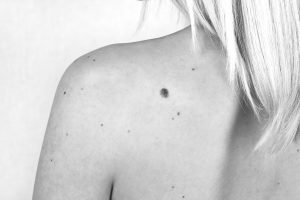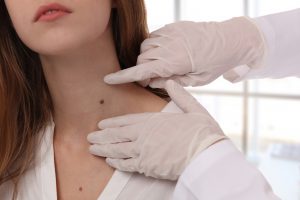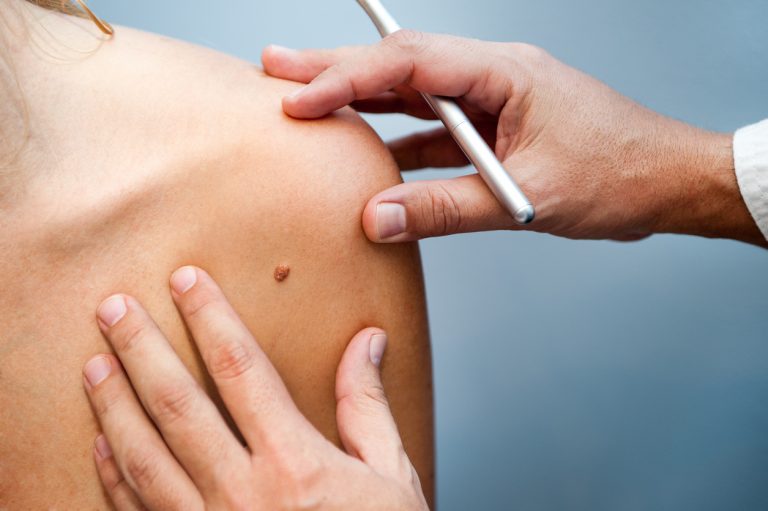
Statistically, Men Are At A Higher Risk Than Women Of A Skin Cancer Diagnosis – Here’s Why
Discover why men are more likely to be diagnosed with skin cancer than women and what you can do to lower your risk.
Dr Michael Rich is a specialist dermatologist who has been performing tumescent liposuction for over 30 years. Find out if Liposuction is suitable for you at ENRICH Clinic.
At ENRICH Clinic, we have a wide range of dermatological and cosmetic body treatments tailored to individual body and patient needs.
At ENRICH Clinic, our treatments are performed by our medical team consisting of doctors, nurses, and dermatologists and are tailored to each patient’s skin health needs.
ENRICH Clinic is committed to your skin health and well-being with a range of dermatological & cosmetic treatments tailored to the individual. Our treatments are performed by our medical team consisting of doctors, nurses, and dermatologists.
Skin health is essential for everyone. ENRICH Clinic has a wide range of technologies and dermatological solutions to help you achieve your skin care goals.
There are several different types of skin cancer, and melanoma is one of the most dangerous kinds. However, progress is constantly being made regarding melanoma treatment, and many patients worldwide have already benefited from this progress.
In this article, we take a look at some of the information around melanoma, the process you go through after being diagnosed, and the best ways to proceed.
Melanomas are a serious form of skin cancer whereby melanocytes – the pigment-producing cells in your skin – become malignant and replicate.
Melanocytes are found in the outer layers; their job is to produce melanin – the dark pigment that causes tanning and dark skin tones. Melanin is protective because it absorbs UV light, thus preventing it from damaging our skin and causing cell damage.
Growths of melanocytes can be non-cancerous and appear as the very common mole or freckles. Cancerous growth of melanocytes is melanoma.

Not every cause of melanoma is known; however, exposure to UV radiation is known to increase the chances of developing melanoma significantly. This is mostly from sunlight or tanning beds. Whilst tanning beds are now illegal in Australia, they have contributed to skin damage in the past.
There are a lot of factors that increase your risk of melanoma. People with fair skin have less pigment in their skin, meaning they have less protection from UV radiation. Light hair and eye colour, freckles, and a history of sunburn are also factors that make you more susceptible.
A lot of skin damage happens due to the sun. Broadly speaking, the sun is most severe between 10 am and 4 pm. Not wearing sunscreen increases your susceptibility to a high UV danger rating. As a good starting point, at least SPF 50+ is a good place to start for exposed skin, even in winter and when the sun is not out.
Whilst melanoma is usually detected on your skin, it can also appear in your eyes and, on rare occasions, your nose, throat or other areas inside your body.
The majority of melanomas are found on normal skin. In fact, only 20-30% of melanomas are found on moles. The first symptoms of melanoma are often straightforward. It could be a change to an existing mole, in either size, colour or a new and unusual-looking growth on your skin.
Generally speaking, the majority of moles on your skin will have a single colour – usually dark – and there will usually be a distinct border between the mole and your skin. Most moles are round and small – about 6millimetres in diameter or smaller. We can also treat non-cancerous moles at ENRICH Clinic.
There are a number of characteristics commonly found in melanomas. Unlike normal moles, they often have scalloped borders and come in strange shapes. They tend to have many colours, which are distributed unevenly. They also tend to be bigger than moles – typically 6 millimetres in diameter and above. Melanomas often change characteristics over time, such as growing in size or changing colour. In some cases, they even itch and bleed. If you are concerned about a mole or some unusual changes you’ve noticed on your skin, you should contact your GP and get a skin check from your dermatologist.
A biopsy is an examination of tissue removed from a living body, aiming to discover information about a particular disease. When a doctor suspects a spot on your skin to be a melanoma, as explained by cancer.org.au, “an excision biopsy is carried out with the removal of the whole spot”. A specialist then examines the tissue to see if any cells are cancerous.
According to skincancer.org, “To diagnose melanoma, a dermatologist biopsies the suspicious tissue and sends it to a lab, where a dermatopathologist determines whether cancer cells are present.” After this, a medical team has to identify what stage the disease is at, which requires a lot of additional tests, such as CT scans, MRIs and blood tests. Treatment options have been improving and can include immunotherapy, chemotherapy, radiation, and surgical removal.
In addition, a doctor may check the lymph nodes nearest the melanoma to see if they are enlarged. This check is important as melanoma can spread through the lymph vessels.
The stages of melanoma diagnoses are based on size and how far it has spread and how deep. Stage II is when the melanoma is larger than 2 millimetres and depth of 0.75mm, while Stage III is when it has spread to the lymph nodes. Stage IV is when the melanoma has spread to other parts of the body or skin far away from the melanoma.
There are several different types of melanoma, varying in many ways.
Treatments are based on individual circumstances. The starting point is a discussion with you and your doctor, who will usually refer you to a dermatologist, who is a skin specialist.

At ENRICH, our dermatologists, including our founder, Dr Michael Rich, are experienced in treating melanoma. Depending on the advancement of the melanoma, you may also have to consult with an oncologist and possibly other specialists.
There have been a lot of advances in recent years regarding melanoma treatment. Surgery is still the traditional standard treatment for early-stage melanoma. Surgery combined with a drug regime is also the preferred treatment method for more advanced melanoma. Melanoma is most often excised (removed) as a treatment starting point. Those whose melanoma has metastasised or those with a pre-existing condition are often unable to have a melanoma removed.
Sometimes targeted therapies are used to treat melanoma. These therapies use drugs or other substances to attack specific types of cancer cells with less harm to normal cells. As with all treatments, there are some side effects, and the body can become resistant to ongoing drugs. Researchers continue exploring ways to make these treatments more effective for more patients.
Another method often applied is the use of immune checkpoint inhibitors. These are “treatments that help the body’s immune system fight cancer more effectively” and are used in cases when melanoma cannot be removed surgically. Three particular drugs are used as immune checkpoint inhibitors.
In addition, traditional cancer treatments are still the most widely used to treat melanoma. These include chemotherapy, which uses medicines to kill cancer cells, and radiotherapy, which operates in a similar way.
After the successful removal of a melanoma, you will still have contact with your doctor to keep on top of things. There is always an increased risk of recurring or new melanoma developing when you have had one previously; as such, they will provide the best advice for keeping your skin safe.
For anyone who has been diagnosed with melanoma, it is a challenging time. It can be helpful to talk to family and friends about your situation but always consult your doctor or dermatologist on any medical situation and discuss your options thoroughly. If you don’t understand the answer or require more information – ask again. It is essential that you, as the patient, are involved in any treatment plan.
For those looking for further information on melanoma, we can help!
We are experienced in skin checks and skin cancer treatments at ENRICH.
You can contact us or give us a call on 03 9500 9500.
*With all surgeries or procedures, there are risks. Consult your physician (GP) before undertaking any surgical or cosmetic procedure. Please read the consent forms carefully and be informed about every aspect of your treatment. Surgeries such as liposuction have a mandatory seven-day cooling-off period to give patients adequate time to be sure of their surgery choice. Results may also vary from person to person due to many factors, including the individual’s genetics, diet and exercise. Before and after photos are only relevant to the patient in the photo and do not necessarily reflect the results other patients may experience. Ask questions. Our team of dermatologists, doctors and nurses are here to help you with any of your queries. This page is not advice and is intended to be informational only. We endeavour to keep all our information up to date; however, this site is intended as a guide and not a definitive information portal or in any way constitutes medical advice.
"*" indicates required fields
Combining Dr Rich’s dermatological skill with his knowledge of restorative skin regimes and treatments, the ENRICH range is formulated to help maintain and complement your skin. Our signature Vitamin C Day & Night creams are now joined by a Vit A, B,&C Serum and a B5 Hyaluronic Gel, both with hydration properties and much, much more.

Discover why men are more likely to be diagnosed with skin cancer than women and what you can do to lower your risk.

Here in Australia, when working outdoors you must make looking after your skin a priority. We can help with your skin health.

Non-melanoma skin cancers (keratinocyte cancers) are the most common form of cancers in Australia and are generally not life-threatening

There are so many reasons making your own products at home is a great idea, but when it comes to sunscreen, the jury is out: don’t do it!
Subscribe to the ENRICH newsletter and receive latest news & updates from our team.
Enrich Clinic acknowledges the Traditional Lands of the Wurundjeri Woi Wurrung and Bunurong peoples of the East Kulin Nations on which we work and trade. We pay respect to their Elders past, present and emerging. We extend our acknowledgement and respect to the LGBTQIA+ community who we welcome and support. Read our full Acknowledgement Statement here
